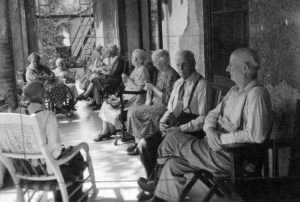 Has an elderly loved one mentioned a fall-related injury in a nursing home or assisted-living facility in San Diego County? Or, have you learned that an elderly parent suffered a fall while under the care of a nursing home staff? Falls often result from nursing home neglect, and it is important to ensure that our elderly loved ones are safe from preventable accidents and injuries. According to a recent article in the Chicago Tribune, fall-related injuries are becoming a more serious concern in California and throughout the country. One researcher in particular, Jon Pynoos, emphasizes that falls really are preventable. What should you know about falls among the elderly and learning about new methods of prevention?
Has an elderly loved one mentioned a fall-related injury in a nursing home or assisted-living facility in San Diego County? Or, have you learned that an elderly parent suffered a fall while under the care of a nursing home staff? Falls often result from nursing home neglect, and it is important to ensure that our elderly loved ones are safe from preventable accidents and injuries. According to a recent article in the Chicago Tribune, fall-related injuries are becoming a more serious concern in California and throughout the country. One researcher in particular, Jon Pynoos, emphasizes that falls really are preventable. What should you know about falls among the elderly and learning about new methods of prevention?
Paying Greater Attention to Falls Among the Elderly
As the article notes, about “one-third of seniors over 65 fall each year, causing more than 2.5 million injuries treated in ERs, leading to 734,000 hospitalization and more than 30,200 deaths, with an annual price tag exceeding $40 billion.” Those rates will only increase as the U.S. population continues to age, according to the Centers for Disease Control and Prevention (CDC). The CDC estimates that deaths from falls among the elderly will rise to around 100,000 per year—a number that is four times the current rate of fall-related fatalities. Given these numbers, both government and private funding sources to study fall prevention have helped to make new research possible.
 California Nursing Home Abuse Lawyer Blog
California Nursing Home Abuse Lawyer Blog





















